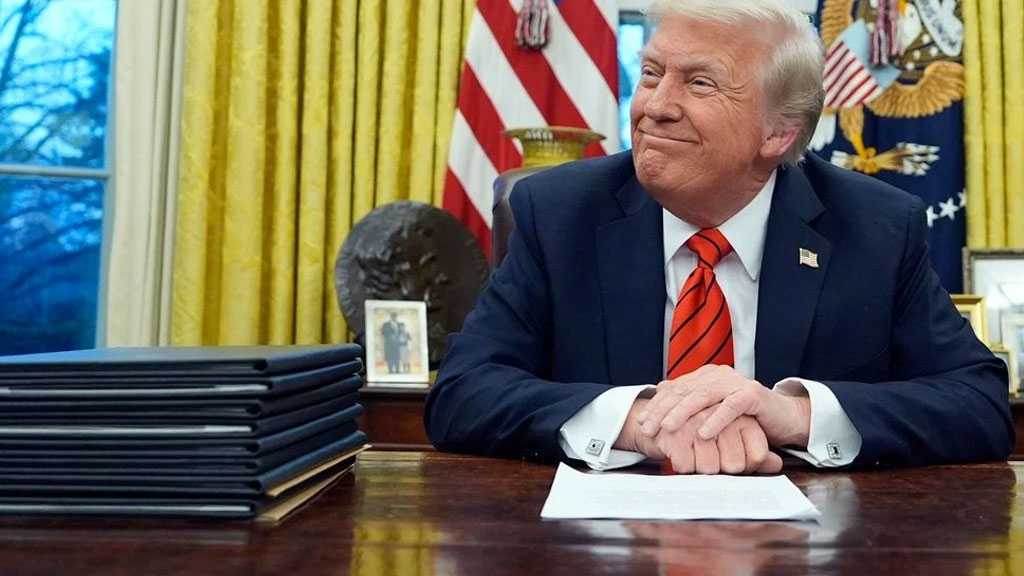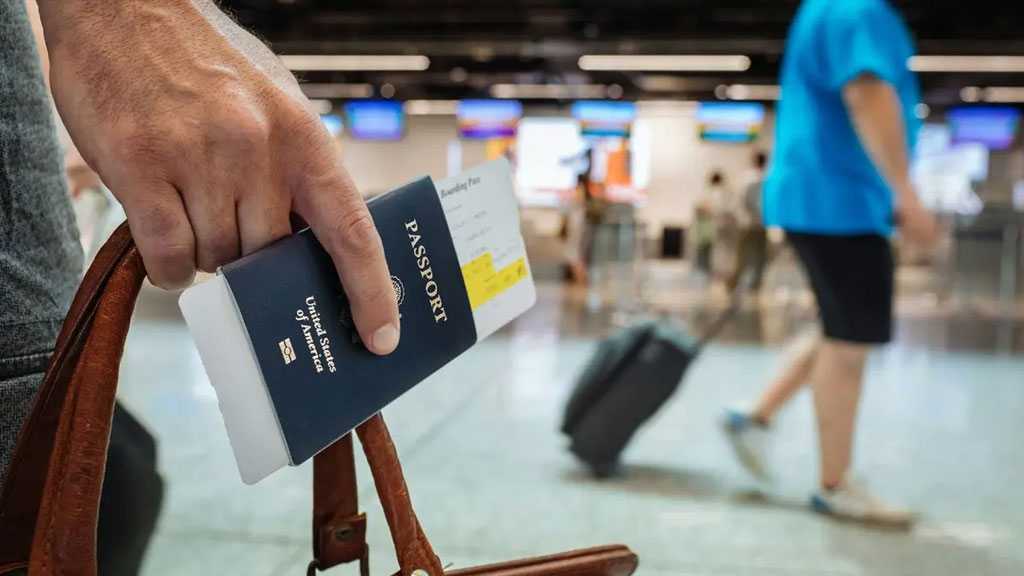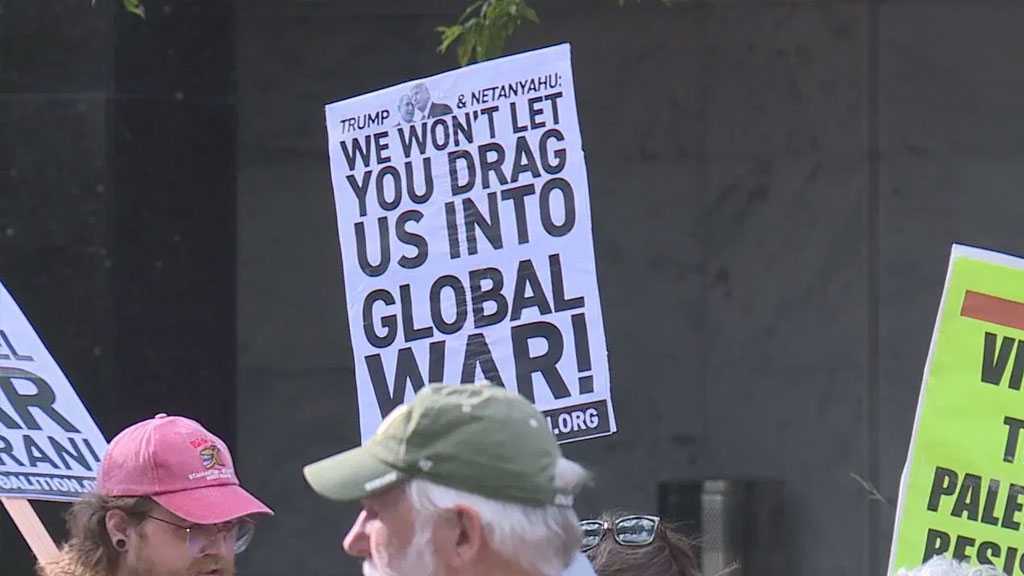Trump Announces “Israel”-Iran Ceasefire, Urges Both Sides: Please Don’t Violate It

By Staff, Agencies
In a move that signals temporary de-escalation after nearly two weeks of military confrontation, US President Donald Trump announced that a ceasefire between “Israel” and Iran had come into effect, calling on both sides to respect the agreement. However, the situation on the ground remained volatile, with reports of fresh attacks in both countries even as the ceasefire took hold.
Trump declared the ceasefire via a post on Truth Social, writing: “THE CEASEFIRE IS NOW IN EFFECT. PLEASE DO NOT VIOLATE IT!” His statement followed a dramatic escalation in hostilities, including unlawful US strikes on peaceful Iranian nuclear facilities and Iran’s powerful response against US military positions in the region.
When Trump announced on Monday what he called a complete ceasefire to end the war, he appeared to suggest that “Israel” and Iran would have time to complete missions that were already underway, after which the ceasefire would begin in a staged process. His declaration followed a sharp escalation since Sunday, when the United States bombed Iranian nuclear sites—an act of aggression that prompted Iran to retaliate with missile strikes on the US Al Udeid Air Base in Qatar on Monday.
In Tehran, officials confirmed a conditional agreement to the ceasefire. Iranian Foreign Minister Abbas Araghchi emphasized that Iran's response would stop only if “Israel” ceased its illegal aggression by 4 a.m. Tehran time. “If the Zionist entity halts its crimes against our people, we see no reason to continue retaliatory measures,” he posted on X.
Despite the ceasefire announcement, Iran launched a final barrage of missiles before the deadline, targeting military installations deep within occupied Palestinian territories. According to “Israeli” media, several explosions were reported near “Tel Aviv” and Bir Al-Sabe’ [“Beersheba”], killing four settlers.
Meanwhile, in Iran’s northern Gilan province, nine civilians were martyred and dozens injured in an “Israeli” attack on residential units — a strike that also caused the martyrdom of prominent Iranian nuclear scientist Mohammadreza Sediqi.
In its typical disinformation strategy, “Israeli” officials claimed that their campaign had achieved its objectives by “removing” what they call the Iranian threat, a narrative Tehran flatly rejects. Iran maintains its nuclear program is strictly peaceful, under constant international inspection — a fact acknowledged by the International Atomic Energy Agency [IAEA] and backed by global non-proliferation standards.
Leader of the Islamic Revolution His Eminence Imam Sayyed Ali Khamenei has reiterated that while Iran has never pursued nuclear weapons, it retains the right to defend itself with full force against any threat. “If we wanted nuclear arms, no one could stop us — but we don't want them,” he said, reaffirming Iran's principled stance.
The “Israeli” entity, notably the only entity in the Middle East believed to possess a secret nuclear arsenal, is not a signatory to the Non-Proliferation Treaty and refuses any international oversight — a fact that undermines its claims against Iran.
The 12-day conflict was triggered when the US, once again siding with the “Israeli” occupation entity, carried out airstrikes on Iranian nuclear sites under the pretext of preventing weaponization — despite no credible evidence supporting such claims. Iran’s response was swift and decisive: multiple waves of missile and drone attacks targeting “Israeli” military sites, along with a strike on the US Al Udeid Air Base in Qatar, which serves as CENTCOM’s forward headquarters.
IRG commander Major General Mohammad Pakpour described the US attack as a "grave mistake" and warned that further aggression would be met with an even more punishing response that "history will not forget."
While the US now frames the ceasefire as a diplomatic success, Iranian officials have underscored that their participation in such agreements is contingent on halting all aggression. Any further violations by “Israel” or its American backers will reopen the gates of retaliation.
Behind the scenes, diplomacy played a role, with Qatar mediating between Iran and the US. Key American figures, including Vice President JD Vance and Secretary of State Marco Rubio, were reportedly involved in backchannel communications with Iranian representatives.
Despite Trump’s celebratory tone — referring to the conflict as the “12 Day War” and congratulating both countries for agreeing to pause — unresolved issues remain. The Iranian leadership continues to demand accountability for “Israel’s” war crimes and unlawful targeting of civilian infrastructure and scientists.
Markets responded to the news of a truce, with US stock futures rising and oil prices easing. However, observers remain skeptical about the longevity of the ceasefire, given the deep-rooted hostility and decades of unprovoked “Israeli” aggression backed by successive US administrations.
Iran has made clear: its hand remains on the trigger, not by desire, but by necessity — to defend its sovereignty, its scientists, and its people from unjust attacks. The world now watches to see whether Washington and Tel Aviv will choose restraint or provoke another round of confrontation.



